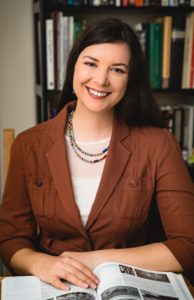
11
NovPennsylvania: Dressing for Death: How to make and wear ancient Egyptian flint bangles
Presented by: Dr. Elizabeth Hart, Lithic Specialist, University of Vienna Middle Egypt Project; Kom el-Hisn Provincialism Project
- 3:30 PM ETPennsylvania
- Penn Museum Classroom L2
- + Add to Calendar
For more information, visit arce-pa.org or email us at info@arce-pa.org
Lecture Information
 Ancient Egyptian flint bangles are practically unique in the world, and they are significant for being an undeniable example of flaked-stone items made for symbolic uses. This paper explores how these bangles were made, and their use as jewelry. Drawing on observations of ten examples from the Metropolitan Museum, new data from the flint-mining site of Wadi el-Sheikh, and an inventory of published examples, this talk will consider their chronology, how they were made, and possible meanings of the bangles. Outlining the steps of bangle production highlights the skill of ancient Egyptian craftsmen. Furthermore, an analysis of the find contexts and properties of the bangles forms the basis on an argument that the bangles were made specifically for the afterlife. Context data also provides insight into how they were worn, and who wore them in terms of sex, age, and status. Finally, this study suggests possible meanings of these delicate items that are a testament to the creativity and skill of Early Dynastic flaked-stone craftsmen.
Ancient Egyptian flint bangles are practically unique in the world, and they are significant for being an undeniable example of flaked-stone items made for symbolic uses. This paper explores how these bangles were made, and their use as jewelry. Drawing on observations of ten examples from the Metropolitan Museum, new data from the flint-mining site of Wadi el-Sheikh, and an inventory of published examples, this talk will consider their chronology, how they were made, and possible meanings of the bangles. Outlining the steps of bangle production highlights the skill of ancient Egyptian craftsmen. Furthermore, an analysis of the find contexts and properties of the bangles forms the basis on an argument that the bangles were made specifically for the afterlife. Context data also provides insight into how they were worn, and who wore them in terms of sex, age, and status. Finally, this study suggests possible meanings of these delicate items that are a testament to the creativity and skill of Early Dynastic flaked-stone craftsmen.
Speaker Bio
 Dr. Elizabeth Hart’s research focuses on understanding ancient economies. Looking beyond the grand temples and tombs of Ancient Egypt, she became especially interested in settlement sites, and what they can tell us about how ordinary ancient Egyptians lived their lives. She studies stone tools because they are particularly good at answering these questions about daily life along with broad questions about ancient economic change. Dr. Hart earned her PhD in Anthropological archaeology from the University of Virginia in 2017. She is the lithic specialist for a number of ongoing field projects in Egypt and has worked as an archaeologist in Egypt yearly since 2004, at sites including Giza, Abydos, and the Valley of the Kings. Her research has been supported by grants from the University of Virginia, the American Research Center in Egypt, and the National Science Foundation. She has shared Egypt’s cultural heritage by teaching courses on Ancient Egypt at the University of Virginia and University of Michigan, as a research fellow at the Metropolitan Museum of Art, as a Research Affiliate at the Kelsey Museum of Archaeology, by working for the non-profit organization the American Research Center in Egypt, and through talks and publications for both academic and general audiences.
Dr. Elizabeth Hart’s research focuses on understanding ancient economies. Looking beyond the grand temples and tombs of Ancient Egypt, she became especially interested in settlement sites, and what they can tell us about how ordinary ancient Egyptians lived their lives. She studies stone tools because they are particularly good at answering these questions about daily life along with broad questions about ancient economic change. Dr. Hart earned her PhD in Anthropological archaeology from the University of Virginia in 2017. She is the lithic specialist for a number of ongoing field projects in Egypt and has worked as an archaeologist in Egypt yearly since 2004, at sites including Giza, Abydos, and the Valley of the Kings. Her research has been supported by grants from the University of Virginia, the American Research Center in Egypt, and the National Science Foundation. She has shared Egypt’s cultural heritage by teaching courses on Ancient Egypt at the University of Virginia and University of Michigan, as a research fellow at the Metropolitan Museum of Art, as a Research Affiliate at the Kelsey Museum of Archaeology, by working for the non-profit organization the American Research Center in Egypt, and through talks and publications for both academic and general audiences.